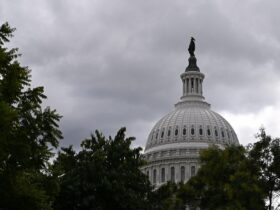New Delhi (Study Abroad)The US government has sent an ultimatum to 9 top universities like MIT, Brown and Dartmouth. Under this notice, these universities will have to limit the number of international graduate students to 15% of the total enrollment. In this too, the number of students of a 1st country will have to be limited to 5%. This instruction has been linked to Federal Funds. This means that if these institutes do not follow the rules, then the government benefits they get can be in danger.
Cap’s impact on India and South Asian students
This new rule sets international graduate admission to 15% and country-based limit to 5%. This will completely change the methods of entry in America for Indian and South Asian students. Currently, Indian students form the largest group of international students in the US. With the installation of this cap, taking admission in the most prestigious and popular institutions will become more competitive than ever. This may reduce the range of high-level colleges options for future applicants.
The speed of admission has already slowed down
US President Donald Trump has made it very difficult for foreigners to settle in America. This change has come at a time when strictness in visa investigation, delay in processing and geo-political changes have already slowed down the pace of enrollment. Recent data shows that the arrival of new students from countries like India has decreased and this new notice will make the way even more difficult for the students planning to graduate in America.
Effect on economic and educational contribution
America’s new policy can have many negative results. South Asian students contribute not only to educational achievements (especially Stem i.e. in the fields of science, technology, engineering and mathematics), but also play an important role in cultural exchange and research productivity. Many of these students later join American workforce through programs like H-1B visa. This helps to meet the lack of talent in high -demand areas like technology and health service.
How much do Indians spend in America?
Indian students have a lot of economic contribution to America’s economy. According to a report, in the last educational year, Indian students collectively spent about US $ 12.5 billion in the US. This includes $ 7.2 billion on tuition fees and $ 5.3 billion on living and eating. This shows that this policy will not only affect the dreams of students, but will also have a direct impact on the American economy.
What to do now students dreaming of going to America?
In view of the 15% limit of admission of international students in American University, students should now seriously consider their strategy of studying abroad and bring diversity in it.
Where to take admission: Instead of focusing on top-tier institutions only, students should now consider the mid-tier and less competitive universities that will reduce the impact of the cap. Community College and transfer programs can also be an alternative route of admission in the US.
Start preparations for the application early: Competition will increase due to low number of seats. Therefore, it is necessary to make a solid profile of the application. This includes good standardized test score, excellent educational records and excellent essays. Applying early through Early Action or Early Delation Round can increase the chances of admission.
Keep an eye on the new option: If admission is not available in America, then now focus on emerging countries of Europe like Germany, France and Ireland. These countries are presenting high quality programs, better post-study work options and increasing number of English-educated degrees. Currently, around 50,000 Indian students are studying in Germany.
Long Term Planning: Families should now adopt a long term approach, instead of academic reputation, costing cost, chances of getting jobs and global experience. By staying flexible and exploring the wide range of the option, you can take the right decision by keeping pace with changing global landscape.
Till now America has been considered to be the biggest center of education, but with this strict rule, students will have to change their strategy and universities will also have to decide whether government funding is necessary for them or international diversity.






Leave a Reply